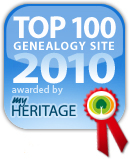Translate
Subscribe to Blog via Email
Genealogies
-
Recent Posts
- Administrative Structure of Parishes of the Siemiatycze Powiat
- The Death of Wincenty Aleksandrowicz – A Soldier Who Died in the January Uprising – 1863
- The Death of Antoni Myszkiewicz – a Soldier Who Died in the January Uprising – 1863
- The Birth and Baptism of Genowefa Sielawa – 1916
- The Roman Catholic Parish of St. Stanislaus Bishop and Martyr in Wieszfnia Kościelna
- The Mystery of the Disappearing Village
- Archaic Terms in Polish Metrical Records – Part 3
- Deciphering the Names of Polish Villages
- Administrative Structure of the Parishes of the Sandomierz Powiat
- Archaic Terms in Polish Metrical Records – Part 2
Archives
Calendar
April 2025 S M T W T F S 1 2 3 4 5 6 7 8 9 10 11 12 13 14 15 16 17 18 19 20 21 22 23 24 25 26 27 28 29 30 Meta
Category Archives: Daily Journal
Three Hellebores and a Summer Snowflake
Every spring, when I visit Filoli, I try to take pictures of the hellebores and the summer snowflakes . The photos have never satisfied me . This spring, I’m happier with the photos than I was in previous years and, … Continue reading
More Camellias at Filoli
Twice before I have published photos of camellias at Filoli, first in a post entitled Camellias at Filoli and then in a post entitled Camellias . On my recent trip to Filoli IÂ saw some varieties of camellias that I had … Continue reading
Narcissus (Daffodils) at Filoli
It’s a new season at Filoli in Woodside, California . It’s still a bit early for Narcissus (Daffodils), but still many were in bloom this week. Narcissus ‘Topolino’ SOURCE: Narcissus ‘Topolino’ (Woodside, San Mateo County, California), photographed by Stephen J. … Continue reading
Administrative Stucture of the Parishes of the Przemyśl Powiat
I am attempting to document the events in my ancestors’ lives with place names that were accurate at the time of the event. Such an approach has several advantages over using current place names, including the fact that the historical place names help to provide a historical context for my ancestors’ lives. Continue reading
Map of the East Prussian Village of Piasutten (Piasutno)
Of the two places called Piasutno in the Słownik Geograficzny Królestwa Polskiego i Innych Krajów Słowiańskich (Geographical Dictionary of the Kingdom of Poland and other Slavonic Countries), the first is located in the what the Słownik Geograficzny calls the Szczytno Powiat. The village of Piasutno (Piasutten in German) is not named on a map of East Prussia from 1882, but it is located about halfway between Schon Damerau and Gr. Puppen. Today, Schon Damerau is called Trelkowo and Gr. Puppen is called Spychowo. The Słownik Geograficzny entry for Piasutno was translated in a previous post. Continue reading
The Polish Village and Gmina of Czerwone
Several of my cousins descend from Józef Dymek of Dymki, Kolno, Łomża in Poland. The Słownik Geograficzny Królestwa Polskiego i Innych Krajów Słowiańskich (Geographical Dictionary of the Kingdom of Poland and other Slavonic Countries) lists three villages called Dymki, but the one that matches this location, the first in the Słownik Geograficzny entry, does not provide the location of the parish where the records would be located. The entry does, however, mention that the village was in the Czerwone Gmina. I looked up Czerwone in the Słownik Geograficzny and found a description of both the village and the Gmina of that name. The map below is a composite image of the Czerwone Gmina generated from two of the Austrian Military Maps from 1910. The vilages that belong to the Czerwone Gmina are highlighted in black boxes. A few villages belonging to the Gmina are not on this map, but are located to the south of the area shown. Continue reading
Posted in Daily Journal
Tagged Słownik Geograficzny
Comments Off on The Polish Village and Gmina of Czerwone
Map of the Belarusian Village of Borysov
Of the three places called Dymki in the Słownik Geograficzny Królestwa Polskiego i Innych Krajów Słowiańskich (Geographical Dictionary of the Kingdom of Poland and other Slavonic Countries), the third is located in the Borysów Powiat, now located in Belarus. Although the village of Dymki does not appear on the 1834 Map of Minsk Gubernia, Dymki was adjacent to Borysov, and Borysov is clearly shown on this map. The Słownik Geograficzny entry for Dymki was translated in a previous post. Continue reading
Posted in Daily Journal
Tagged Słownik Geograficzny
Comments Off on Map of the Belarusian Village of Borysov
Map of the Polish Village of Dymki (Wielun Powiat)
Of the three places called Dymki in the Słownik Geograficzny Królestwa Polskiego i Innych Krajów Słowiańskich (Geographical Dictionary of the Kingdom of Poland and other Slavonic Countries), the second is located in the Wielun Powiat and appears on the third Military Mapping Survey of Austria-Hungary on Sheet 36-51, Opole. The Słownik Geograficzny entry for Długołęka was translated in a previous post. Continue reading
Posted in Daily Journal
Tagged Słownik Geograficzny
Comments Off on Map of the Polish Village of Dymki (Wielun Powiat)
Describing Place Names in Poland – Identifying Administrative Divisions
In 2010, I wrote a series of articles on Describing Place Names in Poland. Because the borders and the administrative divisions in Poland changed so often throughout history, some genealogists may be tempted to simply enter the name of the village, town, or city where their ancestors lived followed by “Poland”. Others may decide to provide some detail to the place names by using the administrative divisions as they exist today or by using the administrative divisions as they existed at only one point in history (e.g. at the time when one specific gazetteer or map was created). To be historically accurate, the genealogist should provide the administrative divisions as they existed at the time of the event described. Recently, a genealogist friend mentioned that she was having difficulty finding the names of the powiats in which her ancestral villages were located and so I am writing this article on Identifying Administrative Divisions in Poland. Continue reading
Adiós, Buenos Aires
The day I spent at Reserva Ecológica Costanera Sur (South Waterfront Ecological Reserve) was my last day in Buenos Aires. Shortly after returning to my hotel, I caught a cab to the airport. The cab driver tried to talk to me, but I know only a handful of words in Spanish (although I can speak some Portuguese). About a third of the way to the airport, I had a horrible realization. I had left my passport in the hotel safe! I excitedly told the cab driver (speaking in Portuspanglish) that I had to go back to the hotel and get my passport and, surprisingly, he understood me! Fortunately, I was able to get back to the hotel, retrieve my passport, and reach the airport in plenty of time to catch my flight home. For this wrap-up of my trip, I have a few miscellaneous photos to share. The first photo is of Puente de la Mujer (Women’s Bridge) so-called because several of the streets in the Puerto Madiero neighborhood where the bridge is located are named for women. To the left of the bridge is the Argentine naval vessel ARA Presidente Sarmiento, built in 1897 and named for the seventh president of Argentina. The second photo is of Museo de Cabildo in the Microcentro of Buenos Aires. Genealogists would love to visit Museo de Cabildo (the old Town Hall) because it contains maps that date from the early 1700s. The existing building is only a remnant of the original. Twice in history, portions of the Cabildo were removed to make way for modern construction. The third photo shows Caesalpinia gillesii (Yellow Bird of Paradise), one more plant in Reserva Ecológica Costanera Sur. The last photo was one of my last glimpses of Reserva Ecológica Costanera Sur, and shows a meadow of Typha sp. (Cattails). With that, I say goodbye to Buenos Aires with sweet memories of her warm, sunny days and cool, starry nights. Continue reading



